
Jem Arnold
@jemarnold.bsky.social
PhD candidate & physiotherapist | 🩸Iliac artery endofibrosis / FLIA | Endurance testing & NIRS.
Treat declarative statements as questions?
Treat declarative statements as questions?
Oh they did at least propose updated estimates by performance level in a subsequent paper
dx.doi.org/10.1055/a-20...
dx.doi.org/10.1055/a-20...

September 10, 2025 at 3:25 AM
Oh they did at least propose updated estimates by performance level in a subsequent paper
dx.doi.org/10.1055/a-20...
dx.doi.org/10.1055/a-20...
Saw a question "what %FTP should my first threshold be at?"
How do we begin to guess? Start with a prediction interval, not a falsely precise point estimate
Data from Sitko et al 2022 helps as a starting estimate (link below 👇)
Any similar datasets? (particularly for female cyclists?)
How do we begin to guess? Start with a prediction interval, not a falsely precise point estimate
Data from Sitko et al 2022 helps as a starting estimate (link below 👇)
Any similar datasets? (particularly for female cyclists?)

September 10, 2025 at 3:12 AM
Saw a question "what %FTP should my first threshold be at?"
How do we begin to guess? Start with a prediction interval, not a falsely precise point estimate
Data from Sitko et al 2022 helps as a starting estimate (link below 👇)
Any similar datasets? (particularly for female cyclists?)
How do we begin to guess? Start with a prediction interval, not a falsely precise point estimate
Data from Sitko et al 2022 helps as a starting estimate (link below 👇)
Any similar datasets? (particularly for female cyclists?)
This is really, really good 👀

August 24, 2025 at 3:08 PM
This is really, really good 👀
Matthews et al, 2023. Identification of Maximal Steady State Metabolic Rate by the Change in Muscle Oxygen Saturation journals.physiology.org/doi/full/10....

June 26, 2025 at 6:01 PM
Matthews et al, 2023. Identification of Maximal Steady State Metabolic Rate by the Change in Muscle Oxygen Saturation journals.physiology.org/doi/full/10....
Kirby et al 2021. The balance of muscle oxygen supply and demand reveals critical metabolic rate and predicts time to exhaustion journals.physiology.org/doi/full/10....
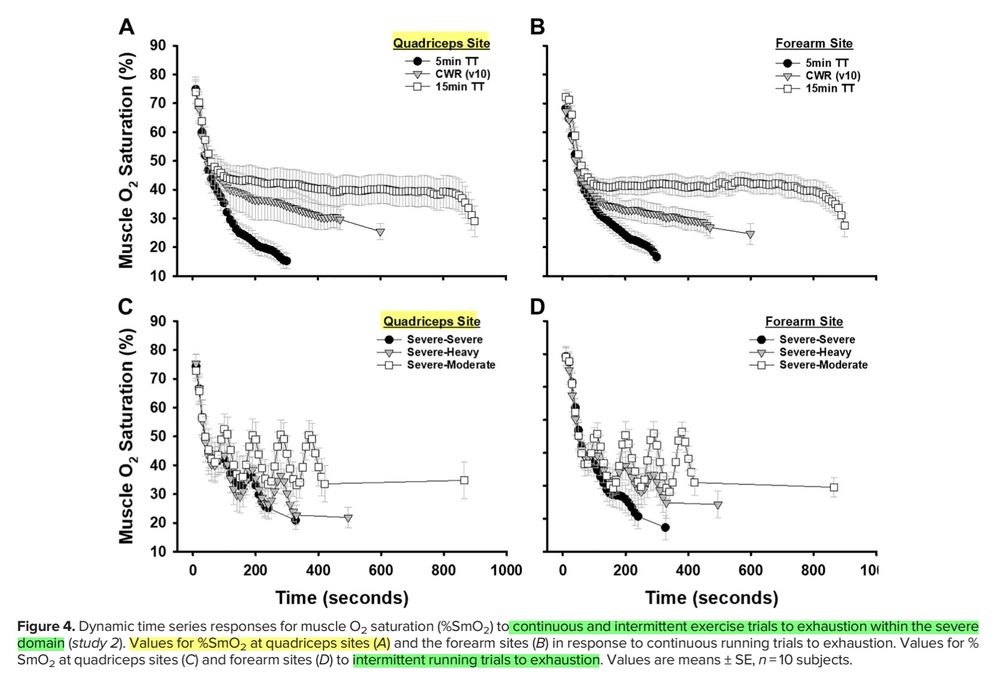
June 26, 2025 at 6:01 PM
Kirby et al 2021. The balance of muscle oxygen supply and demand reveals critical metabolic rate and predicts time to exhaustion journals.physiology.org/doi/full/10....
Faith Kipyegon & Dr. Brett Kirby using MoxyMonitor #muscleoxygenation #NIRS during training for her 4-min mile attempt coming up now!
They have published how they might be using this information (see links below 👇)
From their promotional bit a few minutes ago
They have published how they might be using this information (see links below 👇)
From their promotional bit a few minutes ago

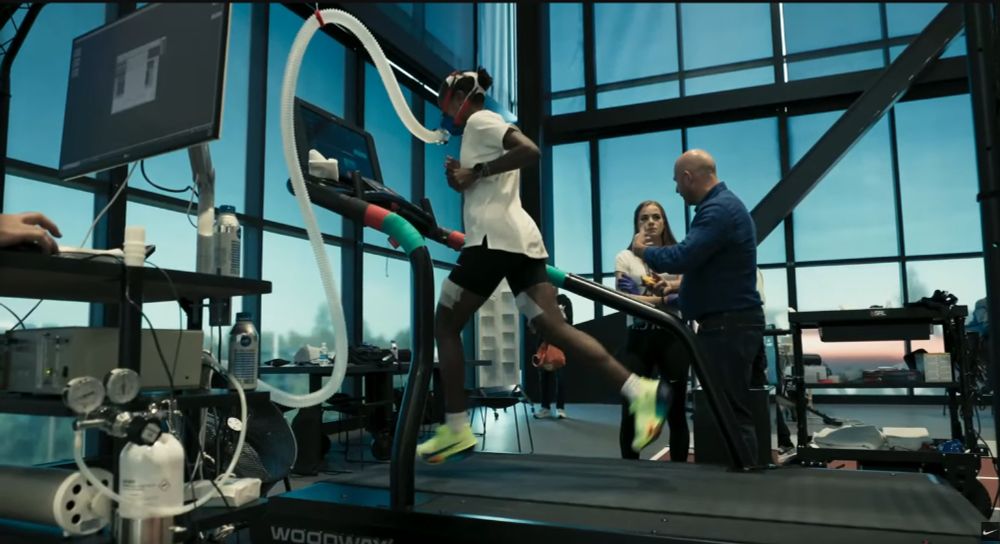
June 26, 2025 at 6:01 PM
Faith Kipyegon & Dr. Brett Kirby using MoxyMonitor #muscleoxygenation #NIRS during training for her 4-min mile attempt coming up now!
They have published how they might be using this information (see links below 👇)
From their promotional bit a few minutes ago
They have published how they might be using this information (see links below 👇)
From their promotional bit a few minutes ago
Thoughts about running? Will propulsion phase be above the critical occlusion tension in locomotor muscles? During sprints? Middle-distance? Marathon??
I'd expect it probably is in gastroc at least, based on how mNIRS deoxygenates during incremental running in many athletes 🤔
I'd expect it probably is in gastroc at least, based on how mNIRS deoxygenates during incremental running in many athletes 🤔

June 7, 2025 at 1:43 PM
Thoughts about running? Will propulsion phase be above the critical occlusion tension in locomotor muscles? During sprints? Middle-distance? Marathon??
I'd expect it probably is in gastroc at least, based on how mNIRS deoxygenates during incremental running in many athletes 🤔
I'd expect it probably is in gastroc at least, based on how mNIRS deoxygenates during incremental running in many athletes 🤔
Lead author Matt Fliss presented this work from his PhD at the recent 2025 Moxy Summit, which is available free to watch 9/
moxy-academy.teachable.com/courses/moxy...
moxy-academy.teachable.com/courses/moxy...
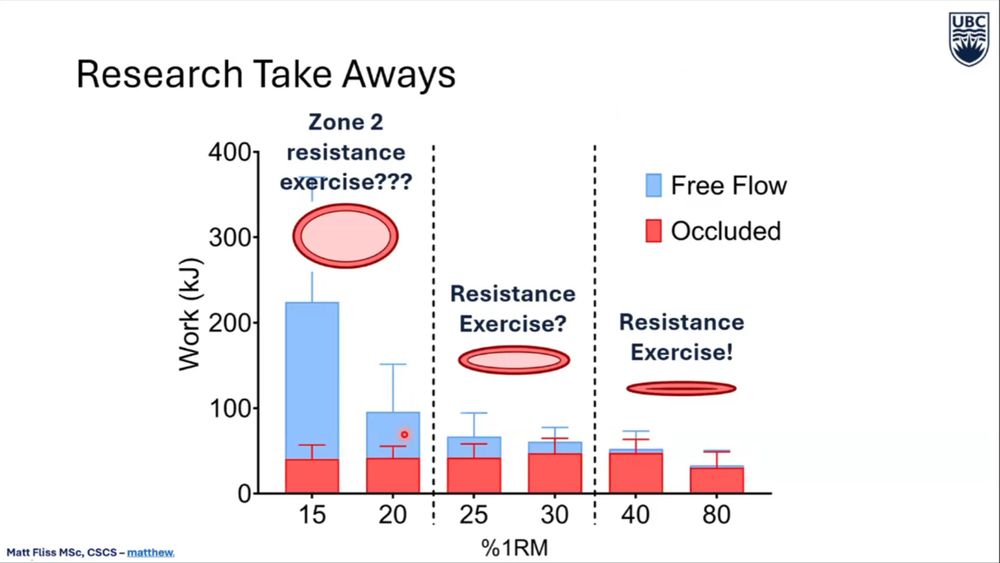
June 6, 2025 at 2:06 PM
Lead author Matt Fliss presented this work from his PhD at the recent 2025 Moxy Summit, which is available free to watch 9/
moxy-academy.teachable.com/courses/moxy...
moxy-academy.teachable.com/courses/moxy...
Even in “pure” endurance sport like cycling, there are momentary intramuscular occlusions during every pedal stroke above a certain power
Pushing on the pedals squeezes blood out of muscle like a sponge. Relaxing the muscle allows blood to flow back in 8/
Pushing on the pedals squeezes blood out of muscle like a sponge. Relaxing the muscle allows blood to flow back in 8/
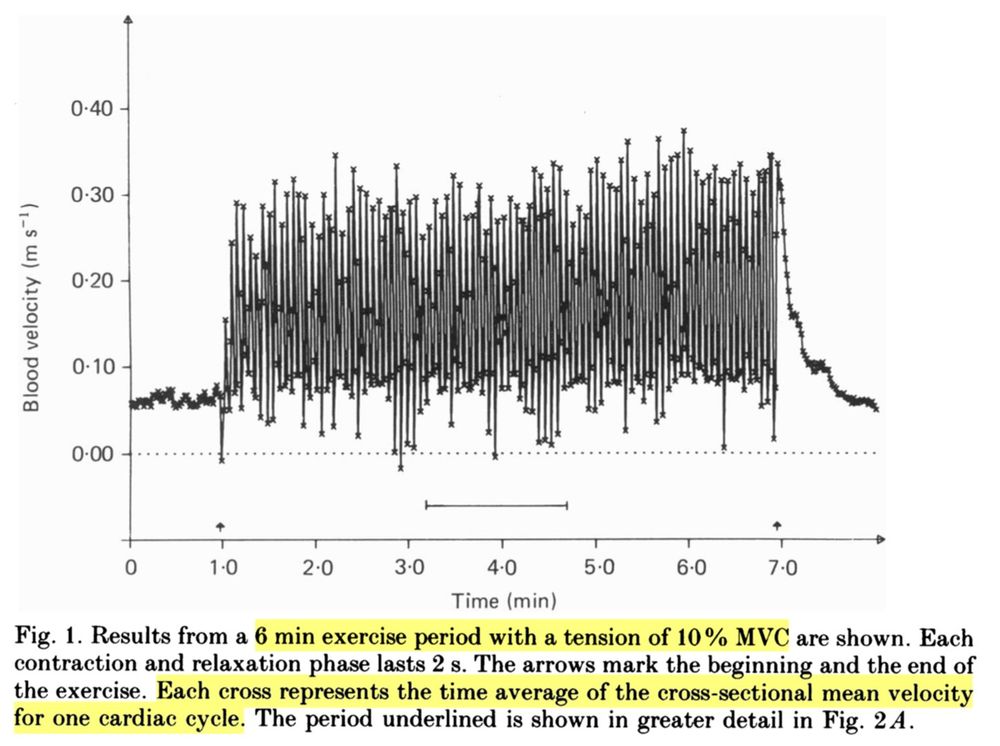
June 6, 2025 at 2:06 PM
Even in “pure” endurance sport like cycling, there are momentary intramuscular occlusions during every pedal stroke above a certain power
Pushing on the pedals squeezes blood out of muscle like a sponge. Relaxing the muscle allows blood to flow back in 8/
Pushing on the pedals squeezes blood out of muscle like a sponge. Relaxing the muscle allows blood to flow back in 8/
mNIRS muscle oxygenation showed improved perfusive matching of O2 delivery to extraction (mQ̇O₂ ~ mV̇O₂) at loads <COT
Implying how mNIRS might be used for internal load monitoring in resistance training (more to come on this 👀) 5/
Implying how mNIRS might be used for internal load monitoring in resistance training (more to come on this 👀) 5/
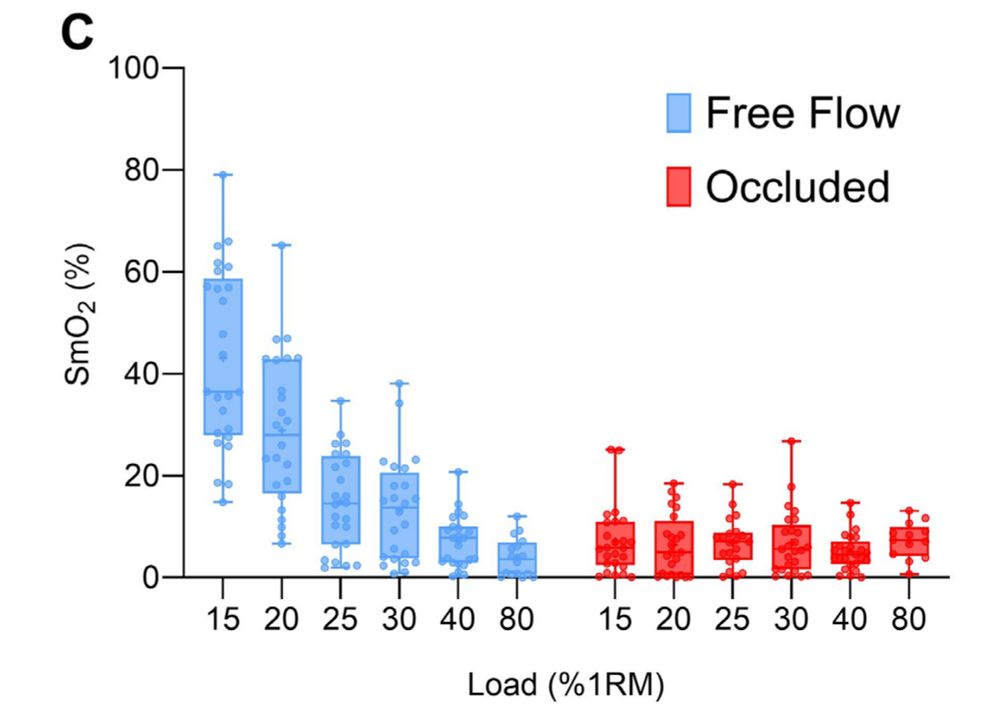
June 6, 2025 at 2:06 PM
mNIRS muscle oxygenation showed improved perfusive matching of O2 delivery to extraction (mQ̇O₂ ~ mV̇O₂) at loads <COT
Implying how mNIRS might be used for internal load monitoring in resistance training (more to come on this 👀) 5/
Implying how mNIRS might be used for internal load monitoring in resistance training (more to come on this 👀) 5/
Endurance trained 🚴(ET) had greater work capacity below COT, while resistance trained 🏋️(RT) had greater work capacity above COT
Work capacity <COT was correlated with ⬆️VO2max & ⬆️capillarisation
Work capacity >COT was correlated with ⬆️peak strength 4/
Work capacity <COT was correlated with ⬆️VO2max & ⬆️capillarisation
Work capacity >COT was correlated with ⬆️peak strength 4/

June 6, 2025 at 2:06 PM
Endurance trained 🚴(ET) had greater work capacity below COT, while resistance trained 🏋️(RT) had greater work capacity above COT
Work capacity <COT was correlated with ⬆️VO2max & ⬆️capillarisation
Work capacity >COT was correlated with ⬆️peak strength 4/
Work capacity <COT was correlated with ⬆️VO2max & ⬆️capillarisation
Work capacity >COT was correlated with ⬆️peak strength 4/
To find COT, knee extension max reps were compared in 'free flow' and with external cuff occlusion
At loads below COT, reps increased exponentially in free-flow conditions, compared to cuff-occluded
At loads above COT, there were no differences between occluded & free-flow 3/
At loads below COT, reps increased exponentially in free-flow conditions, compared to cuff-occluded
At loads above COT, there were no differences between occluded & free-flow 3/
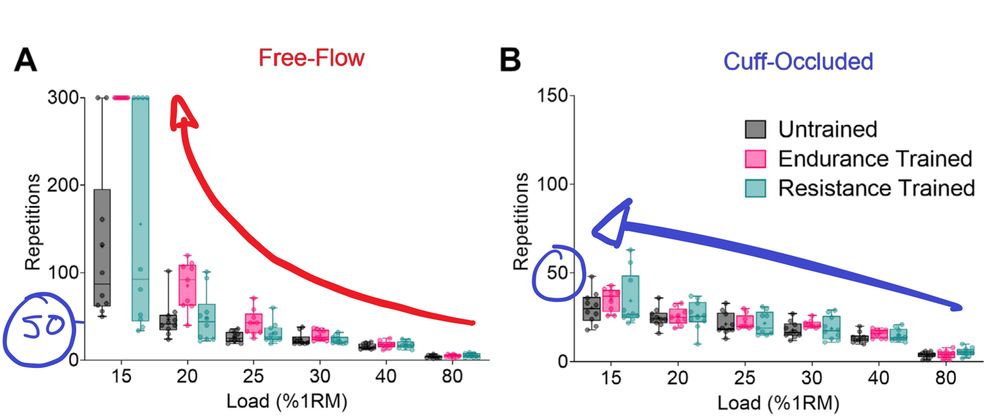
June 6, 2025 at 2:06 PM
To find COT, knee extension max reps were compared in 'free flow' and with external cuff occlusion
At loads below COT, reps increased exponentially in free-flow conditions, compared to cuff-occluded
At loads above COT, there were no differences between occluded & free-flow 3/
At loads below COT, reps increased exponentially in free-flow conditions, compared to cuff-occluded
At loads above COT, there were no differences between occluded & free-flow 3/
Intramuscular pressure from contractions will occlude vessels and reduce muscle blood flow & O₂ exchange
Starting at the smallest capillaries and increasing occlusive tension with contraction force
Above a Critical Occluding Tension (COT), work capacity (reps) is limited 2/
Starting at the smallest capillaries and increasing occlusive tension with contraction force
Above a Critical Occluding Tension (COT), work capacity (reps) is limited 2/

June 6, 2025 at 2:06 PM
Intramuscular pressure from contractions will occlude vessels and reduce muscle blood flow & O₂ exchange
Starting at the smallest capillaries and increasing occlusive tension with contraction force
Above a Critical Occluding Tension (COT), work capacity (reps) is limited 2/
Starting at the smallest capillaries and increasing occlusive tension with contraction force
Above a Critical Occluding Tension (COT), work capacity (reps) is limited 2/
When does #ResistanceExercise become #EnduranceExercise? 🏋️↔️🏃
It might depend on the critical occluding tension in our muscles 💪🩸
🧵/11👇
A Critical Occluding Tension Phase Transition Occurs Between 30-40% 1RM in Dynamic Knee Extension Exercise
onlinelibrary.wiley.com/doi/10.1111/...
It might depend on the critical occluding tension in our muscles 💪🩸
🧵/11👇
A Critical Occluding Tension Phase Transition Occurs Between 30-40% 1RM in Dynamic Knee Extension Exercise
onlinelibrary.wiley.com/doi/10.1111/...

June 6, 2025 at 2:06 PM
When does #ResistanceExercise become #EnduranceExercise? 🏋️↔️🏃
It might depend on the critical occluding tension in our muscles 💪🩸
🧵/11👇
A Critical Occluding Tension Phase Transition Occurs Between 30-40% 1RM in Dynamic Knee Extension Exercise
onlinelibrary.wiley.com/doi/10.1111/...
It might depend on the critical occluding tension in our muscles 💪🩸
🧵/11👇
A Critical Occluding Tension Phase Transition Occurs Between 30-40% 1RM in Dynamic Knee Extension Exercise
onlinelibrary.wiley.com/doi/10.1111/...
Ever wonder what intramuscular contraction pressure and mNIRS look like during knee extensions to max task tolerance? 🦵🔦
mNIRS SmO2 on left. IMP on right. Look closely! 👀
@matthewfliss.bsky.social PhD project
#SportScience #NIRS #ExercisePhysiology
mNIRS SmO2 on left. IMP on right. Look closely! 👀
@matthewfliss.bsky.social PhD project
#SportScience #NIRS #ExercisePhysiology
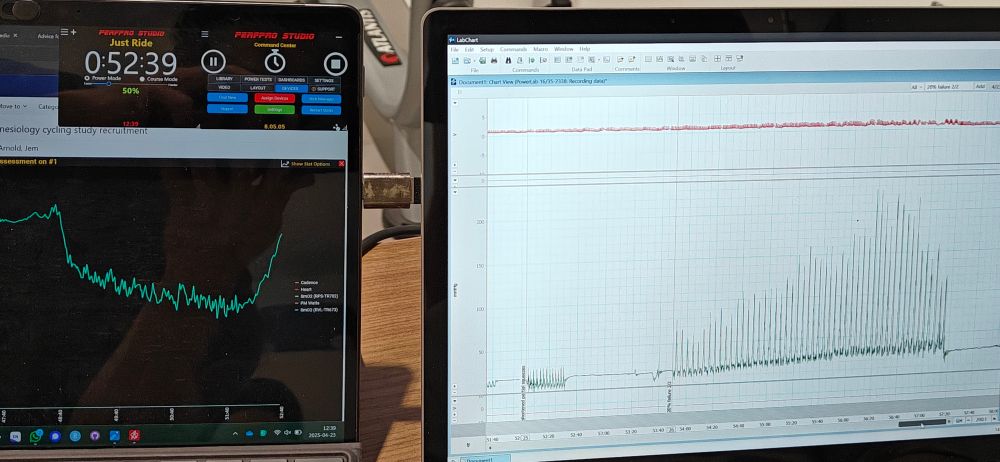

April 24, 2025 at 3:37 AM
Ever wonder what intramuscular contraction pressure and mNIRS look like during knee extensions to max task tolerance? 🦵🔦
mNIRS SmO2 on left. IMP on right. Look closely! 👀
@matthewfliss.bsky.social PhD project
#SportScience #NIRS #ExercisePhysiology
mNIRS SmO2 on left. IMP on right. Look closely! 👀
@matthewfliss.bsky.social PhD project
#SportScience #NIRS #ExercisePhysiology
Collaboration is hard and rewarding. Antagonism is easy and unproductive.
Thanks to IJSPP for this editorial on collaboration in sport & exercise science
I hope we will continue to share knowledge with such generous and excellent colleagues in science
journals.humankinetics.com/view/journal...
Thanks to IJSPP for this editorial on collaboration in sport & exercise science
I hope we will continue to share knowledge with such generous and excellent colleagues in science
journals.humankinetics.com/view/journal...
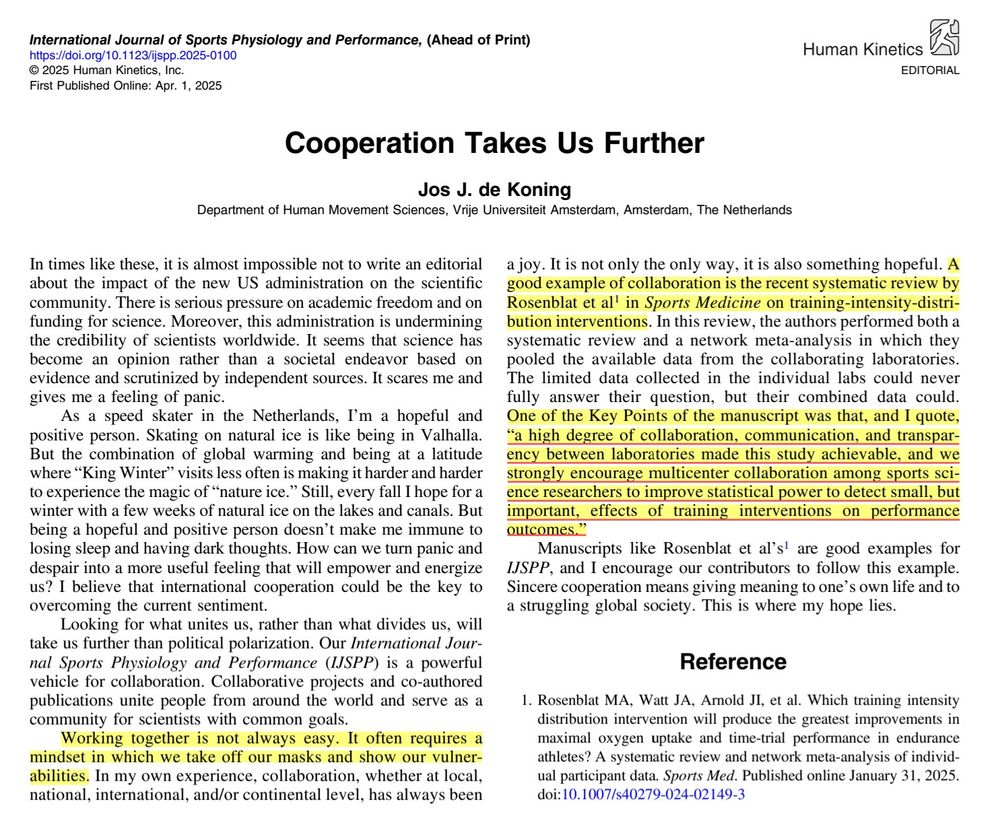
April 3, 2025 at 3:17 PM
Collaboration is hard and rewarding. Antagonism is easy and unproductive.
Thanks to IJSPP for this editorial on collaboration in sport & exercise science
I hope we will continue to share knowledge with such generous and excellent colleagues in science
journals.humankinetics.com/view/journal...
Thanks to IJSPP for this editorial on collaboration in sport & exercise science
I hope we will continue to share knowledge with such generous and excellent colleagues in science
journals.humankinetics.com/view/journal...
Combined with SmO2 resaturation rate (slope of reoxygenation during rest between each incremental stage). Tends to increase from Sept to Nov (inset), speculatively suggesting greater convective mQ̇O2? Then declining from Nov to Feb 🤔
Not sure how to reconcile the NIRS-BP & resat rate trends here yet
Not sure how to reconcile the NIRS-BP & resat rate trends here yet

March 22, 2025 at 5:45 PM
Combined with SmO2 resaturation rate (slope of reoxygenation during rest between each incremental stage). Tends to increase from Sept to Nov (inset), speculatively suggesting greater convective mQ̇O2? Then declining from Nov to Feb 🤔
Not sure how to reconcile the NIRS-BP & resat rate trends here yet
Not sure how to reconcile the NIRS-BP & resat rate trends here yet
NIRS-BP2 'plateau' as represented here, has been argued to suggest diffusion limitation, where additional muscle O2 uptake (mV̇O2) must be driven by convective O2 delivery (mQ̇O2)
Or additional work is being done elsewhere, not under the NIRS probe, in other muscles, heterogenously with muscle depth
Or additional work is being done elsewhere, not under the NIRS probe, in other muscles, heterogenously with muscle depth

March 22, 2025 at 5:45 PM
NIRS-BP2 'plateau' as represented here, has been argued to suggest diffusion limitation, where additional muscle O2 uptake (mV̇O2) must be driven by convective O2 delivery (mQ̇O2)
Or additional work is being done elsewhere, not under the NIRS probe, in other muscles, heterogenously with muscle depth
Or additional work is being done elsewhere, not under the NIRS probe, in other muscles, heterogenously with muscle depth
Love to see change (or lack of) in breakpoints over a competitive season. Maybe surprising LTs didn't change more?
Trend for power @ NIRS-BP2 to decline by ~15 W on average. Meaningful if not significant
Trend for power @ NIRS-BP2 to decline by ~15 W on average. Meaningful if not significant

March 22, 2025 at 5:45 PM
Love to see change (or lack of) in breakpoints over a competitive season. Maybe surprising LTs didn't change more?
Trend for power @ NIRS-BP2 to decline by ~15 W on average. Meaningful if not significant
Trend for power @ NIRS-BP2 to decline by ~15 W on average. Meaningful if not significant
New longitudinal study in female rowers @drake-eserhaut.bsky.social comparing mNIRS oxygenation breakpoints & resaturation with lactate thresholds
As expected, LTs != mNIRS-BPs for individual athletes.
We need more longitudinal mNIRS research like this! But where are the performance outcomes? 👀
As expected, LTs != mNIRS-BPs for individual athletes.
We need more longitudinal mNIRS research like this! But where are the performance outcomes? 👀

March 22, 2025 at 5:45 PM
New longitudinal study in female rowers @drake-eserhaut.bsky.social comparing mNIRS oxygenation breakpoints & resaturation with lactate thresholds
As expected, LTs != mNIRS-BPs for individual athletes.
We need more longitudinal mNIRS research like this! But where are the performance outcomes? 👀
As expected, LTs != mNIRS-BPs for individual athletes.
We need more longitudinal mNIRS research like this! But where are the performance outcomes? 👀
Studies have repeatedly observed that muscle oxidative function (measured from biopsy or more recently non-invasively with mNIRS) shows high explanatory value for endurance TT performance; from 30-90+%
Equalling or even beating traditional models which include VO2max & efficiency 12/
Equalling or even beating traditional models which include VO2max & efficiency 12/

March 20, 2025 at 2:43 PM
Studies have repeatedly observed that muscle oxidative function (measured from biopsy or more recently non-invasively with mNIRS) shows high explanatory value for endurance TT performance; from 30-90+%
Equalling or even beating traditional models which include VO2max & efficiency 12/
Equalling or even beating traditional models which include VO2max & efficiency 12/
Recent studies have focused more on peripheral skeletal muscle determinants of endurance performance
Fibre structure, capillarisation, [myoglobin], oxidative capacity; all factors of "last-millimetre" O2 transport which can be a rate-limiting step 11/
Fibre structure, capillarisation, [myoglobin], oxidative capacity; all factors of "last-millimetre" O2 transport which can be a rate-limiting step 11/

March 20, 2025 at 2:43 PM
Recent studies have focused more on peripheral skeletal muscle determinants of endurance performance
Fibre structure, capillarisation, [myoglobin], oxidative capacity; all factors of "last-millimetre" O2 transport which can be a rate-limiting step 11/
Fibre structure, capillarisation, [myoglobin], oxidative capacity; all factors of "last-millimetre" O2 transport which can be a rate-limiting step 11/
If endurance performance is improving despite no change in VO2max, what else is contributing?
Some studies observe that Δ metabolic efficiency (GE, running economy) is inversely related to ΔVO2max, between athletes and related to Δperformance across a training season 10/
Some studies observe that Δ metabolic efficiency (GE, running economy) is inversely related to ΔVO2max, between athletes and related to Δperformance across a training season 10/

March 20, 2025 at 2:43 PM
If endurance performance is improving despite no change in VO2max, what else is contributing?
Some studies observe that Δ metabolic efficiency (GE, running economy) is inversely related to ΔVO2max, between athletes and related to Δperformance across a training season 10/
Some studies observe that Δ metabolic efficiency (GE, running economy) is inversely related to ΔVO2max, between athletes and related to Δperformance across a training season 10/
.. an athlete starting with already high VO2max and TT probably has less capacity to improve those outcomes more
So a strong cross-sectional relationship at one time point turns into a low/negative longitudinal relationship
(I'm glazing over some confounding factors here) 9/
So a strong cross-sectional relationship at one time point turns into a low/negative longitudinal relationship
(I'm glazing over some confounding factors here) 9/

March 20, 2025 at 2:43 PM
.. an athlete starting with already high VO2max and TT probably has less capacity to improve those outcomes more
So a strong cross-sectional relationship at one time point turns into a low/negative longitudinal relationship
(I'm glazing over some confounding factors here) 9/
So a strong cross-sectional relationship at one time point turns into a low/negative longitudinal relationship
(I'm glazing over some confounding factors here) 9/
Does this seem as unintuitive to you as it did to me?
I suspect because we think about endurance performance & VO2max *cross-sectionally* rather than *longitudinally*, which is a kind of Simpson's Paradox
Between individuals, VO2max strongly predicts TT performance, but... 8/
I suspect because we think about endurance performance & VO2max *cross-sectionally* rather than *longitudinally*, which is a kind of Simpson's Paradox
Between individuals, VO2max strongly predicts TT performance, but... 8/

March 20, 2025 at 2:43 PM
Does this seem as unintuitive to you as it did to me?
I suspect because we think about endurance performance & VO2max *cross-sectionally* rather than *longitudinally*, which is a kind of Simpson's Paradox
Between individuals, VO2max strongly predicts TT performance, but... 8/
I suspect because we think about endurance performance & VO2max *cross-sectionally* rather than *longitudinally*, which is a kind of Simpson's Paradox
Between individuals, VO2max strongly predicts TT performance, but... 8/

